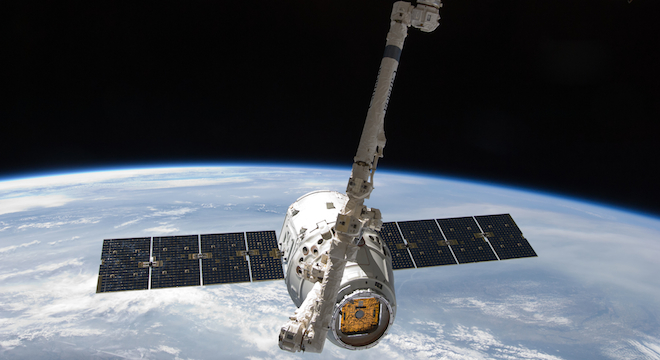Updated 12:05 p.m. ET, Friday, August 3
NASA on Friday announced the latest round of funding for development of commercial spacecraft capable of ferrying astronauts to space from U.S. soil.
The agency is giving a total of $1.1 billion in funding to three companies, each of which is pursuing its own new crewed spacecraft: Boeing, a longtime NASA contractor, will receive the largest chunk of the funding award, some $460 million for development of its CST-100 vessel.
SpaceX, which recently wowed the world by performing the first successful docking of a privately-owned craft, the Dragon, with the International Space Station, will receive the next-largest chunk, some $440 million. That will be used to continue development of a crewed version of the Dragon.
Finally, Sierra Nevada Corp., another government and militar aerospace contractor, will receive about half the amount of the other awards, some $212.5 million to further work on its Dream Chaser spacecraft, which is perhaps most visually and functionally similar to the retired fleet of NASA Space Shuttles, which all three companies are seeking to replace.
“Today, we are announcing another critical step toward launching our astronauts from U.S. soil on space systems built by American companies,” NASA Administrator Charles Bolden said at the agency’s Kennedy Space Center in Florida in a statement. “We have selected three companies that will help keep us on track to end the outsourcing of human spaceflight and create high-paying jobs in Florida and elsewhere across the country.”
Specifically, the funding awards are the third set given under NASA’s Commercial Crew Program (CCP), an effort that kicked off in 2010 to whittle down those companies that say they can provide viable replacements for the Space Shuttle. The first funding awards were worth a total of $50 million and the second funding awards were worth $315 million. Under CCP, companies must demonstrate to NASA that their spacecraft have the capability of:
“…delivering four astronaut crew members and their equipment to the International Space Station and returning them to Earth at least twice a year. A provider also must assure a crew’s safety in the event of an emergency at the pad and during launch and ascent. The chosen spacecraft must demonstrate it can serve as a 24-hour safe haven during an emergency in space and be able to stay docked to the station for at least 210 days…A fully integrated system includes a spacecraft, launch vehicle, ground operations and mission control center.”
NASA is giving the companies 21 months, till May 2014, to get their spacecraft systems up and running. More to follow after a press conference on the announcement. Stay tuned.
Late update: NASA has posted detailed outlines of the funding agreements for each company as a slideshow on its commercial crew webpage. None of the companies will get a dime until they complete their first milestones.
That said, NASA points out that the two companies to receive the largest dollar awards, SpaceX and Boeing, are on track to perform their first demonstration flights with crew in mid-2015 and late 2016, respectively. However, NASA notes that all of this is dependent on their ability to meet the milestones and continued funding from Congress. NASA’s own timetable is more conservative, stating that the first crewed demo flights probably won’t happen until 2017 at the earliest.
It’s worth pointing out that Congress, too, is growing increasingly impatient with NASA’s commercial crew and cargo seeding experiments. House Republicans in April leaned toward forcing NASA to fund just one commercial crew company, but eventually relented and expanded the award to “2.5” companies, which is what NASA announced today.
Correction: This article originally incorrectly stated that House Democrats held a hearing Wednesday to inquire why commercial crew development hadn’t proceeded faster per industry testimony. In fact, the hearing was held to discuss commercial suborbital reusable launch systems, a broader field. This reference has since been removed from the article to avoid confusion. We regret the error.






